-
By Team Clicflyer
-
August 20, 2022
When you are working in retail, you are expected to have in-depth knowledge and understanding of the market. Since it is impossible to manually track all the happenings in a store or a warehouse, retail analytics tools collect and store data regarding the stock levels, pricing information, discounts, and catalog assortments.
The data is collated to give you insights by working through large databases and statistical algorithms. It tracks and records customer patterns and trends, which allows you to make informed decisions before deciding upon discounts, pricing strategies, and marketing ideas. As a result, you would prevent overstock, losing out on the market trends, and margin loss due to human misconceptions.
What Are The Benefits Of Retail Analytics Tools?
Successful retail brands constantly leverage product, operations, and customer intelligence insights based on retail data analytics tools to make better sales, operations, and marketing decisions. It helps in recognizing consumers, their purchasing preferences, and their offline and online engagement with the brand. Working with retail analytics tools is crucial for e-commerce retailers who want to increase digital advertising impact and brand awareness. You can customize customer experiences and behavior to build strong relationships, develop a loyal customer following, predict market demand and trends, optimize in-store operations, standardize staffing and stock levels and work on improved inventory. Retail analytics tools also develop an understanding of trends and facilitate fact-driven cases to predict future pricing and trend movements. Most modern companies now counter possible competitive risks by focusing on such software; so, how to implement the system?
Easy And Customizable
When you are working with a retail analytics tool, you want to have a simple and customizable user interface. You must leverage real-time data and insights to promote intelligent marketing, sales, merchandising, supply chain optimization, and retail strategies. Brands are hugely impacted by the automation, interpretations, and recommendations derived from the analysis.
Customized And Controlled Data Handling
As the head of the company, you must know what and who you are monitoring in the market. The data set should have three sources that must be measured, which comprises your competitors that match your style and product catalog. You should have at least five such names in retail, which you can analyze to modify your offline or online store.
Real-time Competitive Analysis
Living in a post-pandemic and price-sensitive customer base, pricing agility is a significant challenge. Customers do price-check with your competitors for the most profitable deal. This goes for both online and offline retail; therefore, real-time price benchmarking against the competitors allows for swift and efficient pricing strategy modifications. This saves your team the time and effort to manually research the competitors’ pricing, by the end of which marketing and repricing strategies are no longer needed.
Effective Data Processing
You must have a holistic approach to the market yet know about the details that make retail what it is. The tool must track data across all the market stages, such as catalog assortment, discounting, supply chain metrics, and merchandising. Thus, stakeholders can make critical decisions on product location, unsold stock, and fulfilling customer requirements.
Action Alerts And Trigger
Retail analytics tools automate real-time product assortments and pricing, optimizing effort, time, and pricing update management. Brands must make the best decision as per retail analytics and predictive intelligence, enabling them to analyze and influence the current situation. They help modify the product assortment across different platforms and outlets, which is an impossible task to be done manually.
Identify Market Trends
An excellent retail analytics tool predicts customer trends, which helps brands create a commercially viable product catalog, maintain stocks and sizes. Reports can tell you which catalog products are on-trend, which merchandisers and chain operators can select and optimize. The data and insights also forecast possible demand in the coming months or during the festive season.
Website Suggestions And Recommendations
As potential buyers browse through an offline or online store, the recommendations engine shows them possible items per the analytical trends and browsing history. The list includes products that are viewed, added to the shopping cart, trending items, and product lines. Thus, the engine deploys discounting and product-bundling in place to maximize cross-selling and product upselling.
Therefore, choosing the right retail analytics tool is crucial for your business impact and performance. If you are looking for high-quality and reliable retail analytics services, please visit us for expert solutions at Clic Flyer.
Recent Post
-
 Introducing ClicFlyer: Your Ultimate Shopping Companion in Indonesia!
Introducing ClicFlyer: Your Ultimate Shopping Companion in Indonesia!
-
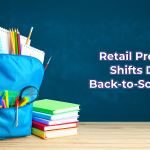 Retail Promotion Shifts During Back-to-School 2022
Retail Promotion Shifts During Back-to-School 2022
-
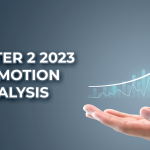 Quarter 2 2023 Promotion Analysis
Quarter 2 2023 Promotion Analysis
-
 Eid-Al-Adha Promotion Analysis 2022: Insights for KSA and UAE
Eid-Al-Adha Promotion Analysis 2022: Insights for KSA and UAE
-
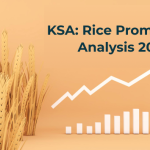 KSA: 2022 Rice Promotional Analysis
KSA: 2022 Rice Promotional Analysis
-
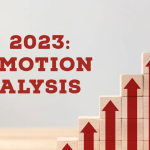 Quarter 1 2023 Promotion Analysis
Quarter 1 2023 Promotion Analysis
-
 Private Label 2022 Promotion Analysis in KSA
Private Label 2022 Promotion Analysis in KSA
-
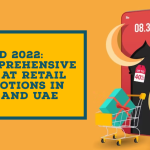 Eid 2022: A Comprehensive Look at Retail Promotions in KSA and UAE
Eid 2022: A Comprehensive Look at Retail Promotions in KSA and UAE
-
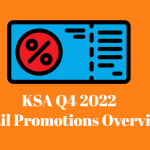 KSA Q4 2022 Retail Promotions Overview
KSA Q4 2022 Retail Promotions Overview
-
 Ramadan 2022- Brief Report and Insights
Ramadan 2022- Brief Report and Insights



